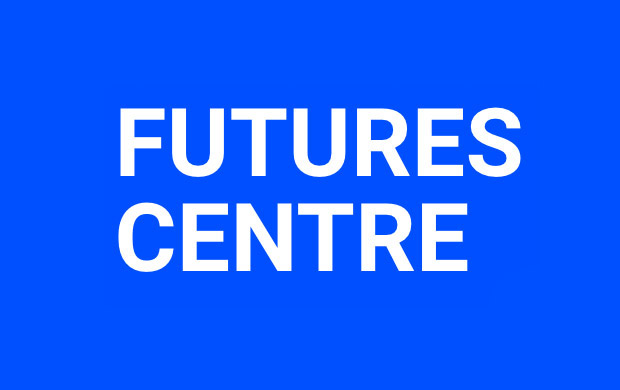The need for greater supply chain transparency isn’t new, but how can we do it well and what’s holding it back?
“Imagine a product that you use daily that’s supply chain is fully transparent, that enables you to see who, how and where that product was made and what its impact on people and the planet… It could be a piece of technology or even an item of food. What information about the product do you know and how would it affect the purchasing decisions you are about to make? How was this possible? And what are the positive outcomes from having this data available?”
Supply chains are the arteries of our global economy, spanning continents and crossing oceans. They can be extremely complex, and relationships between parts of the supply chain remain a key challenge for regulators, ESG investors, businesses, and NGOs. As sustainability moves up the agenda, we’re seeing an increase in discussions around transparency, and the urgency underpinning this. You could say that we are now entering an era of radical transparency.
There are lots of reasons behind this rise, in particular increased expectations from investment communities, regulators, and consumers for businesses to explain the origins of their materials and products. There is a risk that transparency becomes a box ticking exercise, involving minimal long-term thinking and the absence of a just and regenerative mindset. However, traceability and transparency can also offer opportunities for accelerated progress on sustainability goals, engaging marketing stories or and creative innovation pathways with supply chain partners.
A just and regenerative mindset will be key to unlocking new ways of working and living. It sets out a new guiding star for businesses: an economy that sustains the wellbeing of all and the capacity of our natural world to replenish itself, while enabling long-term, broad-based prosperity.
The inquiry
The need for greater transparency is not new, but approaching it is still difficult and there are a myriad of challenges. To support our exploration into transparency, we came up with the following critical questions:
- How do we overcome the lack of standardization and build the evidence and business case to scale transparency and traceability across complex product portfolios?
- How can we make it easier to implement transparency and traceability at scale?
- How can transparency and traceability be used to move beyond compliance, inspiring organisations to innovate through collaboration?
Through exploring these questions with sustainability practitioners from apparel, consumer goods, and retail organisations, and experts such as Katie Shaw (Open Supply Hub), Hannah Cunneen (Forum for the Future) and Albert Tucker (Karma Drinks), we noticed that the barriers to supply chain transparency, and scaling efforts, were even more extensive than we realised.
So, what exactly is holding back progress towards a transparent supply chain?
- There is little incentive to pay to set up the complex infrastructure needed and to engage in the intense data requirements. A strong business case for technological investment is often driven by risk management, regulatory requirements, and consumer expectations – with fewer opportunities easily accessible to capture additional value from the investment. Many manufacturers and smallholders have audit fatigue from multiple requirements and pressure on their time and resources. Additional complex requirements can even carry a risk of fabrication, especially if third-party validations aren’t in place, and suppliers struggle to fulfill the spiralling demands.
- A lack of industry standardisation on approaches to traceability and measuring it makes the process much harder. Governments arguably have a greater role to play in championing sustainability and collaboration across and within industries.
- There is an additional resource requirement needed to collect and process the data – from farming communities and manufacturers, right the way to the consumer businesses – and new skills are often required too.
- Data inherently carries value, and there is a question around who owns it and benefits from it? How is it made available and accessible for different stakeholders, from auditors to consumers?
The challenges listed above are complex, systemic, resource-intensive and cannot be solved by individual efforts alone. Most importantly, supply chain transparency is a shared challenge and responsibility for businesses, regulators, NGOs and investors. It is an opportunity for the end consumer to make more thoughtful choices, especially as technology makes it now easy to create purposeful shopping journeys. As such, collaboration plays a significant role in building a clearer understanding of the barriers and enabling progress.
So, where exactly is the potential for collaboration to help with addressing the challenges?
- Collaborating within supply chains and working more closely with suppliers and wider value chains enables capacity building as trust and support increase through deeper relationships. Empowering and problem-solving with suppliers can lead to more innovative, better solutions, based on a clearer understanding of the challenges.
Example: Suppliers of renewable energy could be invited to collectively invest in renewable energy infrastructure and purchase (or sell) the electricity. - Collaborating with peers can give rise to collective advocacy and could potentially lead to harmonised standards and common data collection platforms. These could also be enabled by resource pooling and cost sharing as everyone calls for a united approach to traceability and transparency.
Example: Brazil’s Prime Minister has called for increased police and intelligence collaboration across regions to protect the Amazon by reducing deforestation, exploitation, and criminal activity. - Collaborating across sectors or wider industries, such as by using open-source data or collaborating around specific challenges. This approach can be used across major commodities too, like cotton, palm oil, and cocoa.
Example: Patagonia supported Samsung to rethink its washing machines to tackle the issue of microfibre shedding from clothing and the subsequent polluting of waterways. The cross-sector collaboration supported a move away from profit-driven thinking to an approach that considers the environment and mitigating impacts.
So what?
Full transparency of a product’s supply chain will be difficult, but it is a critical component of business efforts towards tackling scope 3 emissions and enabling consumers to make sustainable choices. Making progress on transparency can also help to deliver strategies through unlocking new operating and business models fit to drive future growth. Closer relationships with supply chains can lead to more compelling stories, as seen with Karma Drinks who source the flavour of their drinks from Western Africa, and increased supply chain resilience. Most importantly though, transparency can help in identifying risks, after all, “we cannot manage what we do not know” (Katie Shaw, Open Supply Hub).











Join discussion